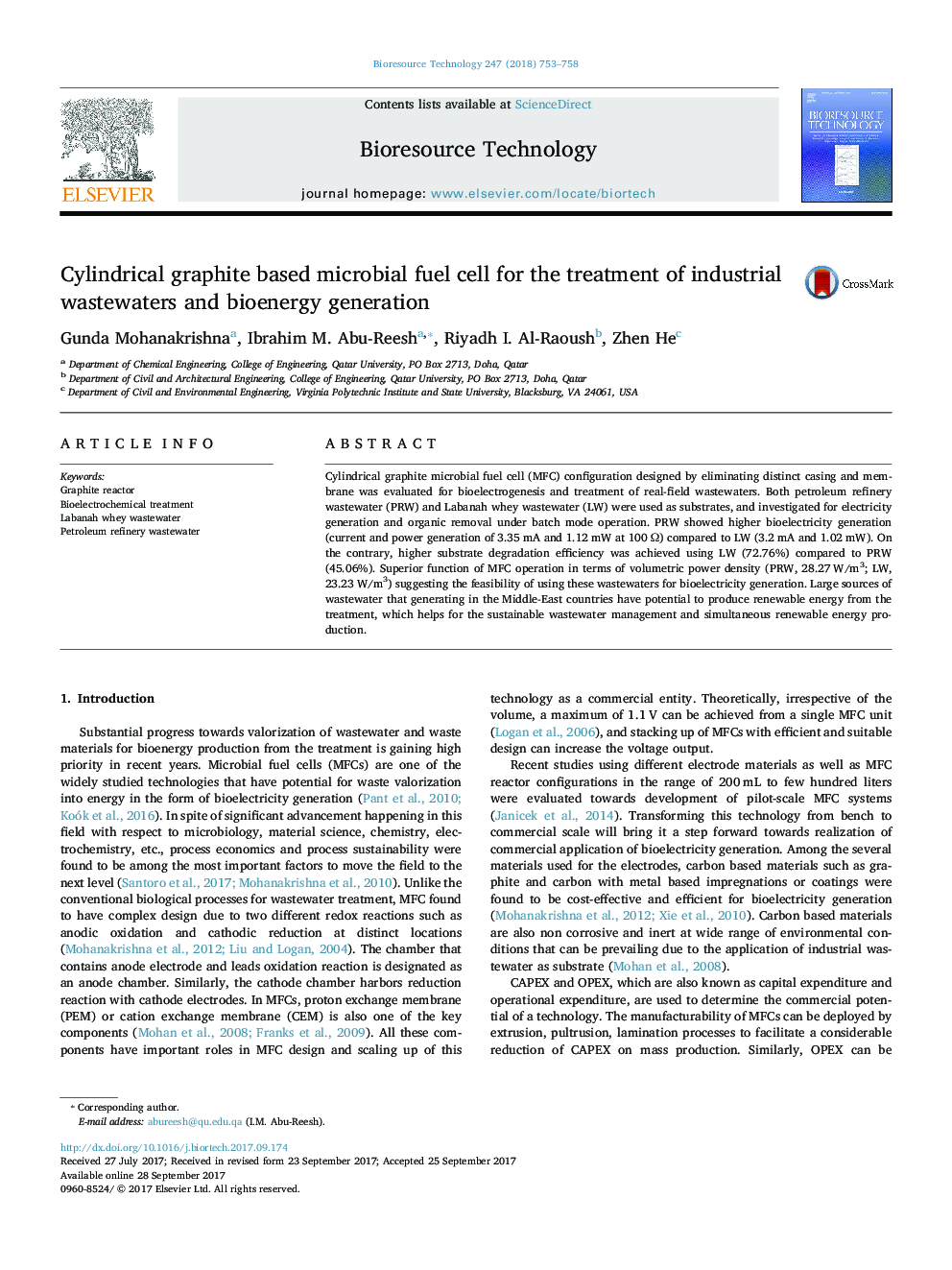| Article ID | Journal | Published Year | Pages | File Type |
|---|---|---|---|---|
| 4996702 | Bioresource Technology | 2018 | 6 Pages |
â¢Cylindrical graphite microbial fuel cell evaluated for bioelectricity generation.â¢Wastewater from petroleum refinery and Labanah whey processes are suitable substrates.â¢The design is simple, cost-effective and feasible for scaling up MFC technology.
Cylindrical graphite microbial fuel cell (MFC) configuration designed by eliminating distinct casing and membrane was evaluated for bioelectrogenesis and treatment of real-field wastewaters. Both petroleum refinery wastewater (PRW) and Labanah whey wastewater (LW) were used as substrates, and investigated for electricity generation and organic removal under batch mode operation. PRW showed higher bioelectricity generation (current and power generation of 3.35 mA and 1.12 mW at 100 Ω) compared to LW (3.2 mA and 1.02 mW). On the contrary, higher substrate degradation efficiency was achieved using LW (72.76%) compared to PRW (45.06%). Superior function of MFC operation in terms of volumetric power density (PRW, 28.27 W/m3; LW, 23.23 W/m3) suggesting the feasibility of using these wastewaters for bioelectricity generation. Large sources of wastewater that generating in the Middle-East countries have potential to produce renewable energy from the treatment, which helps for the sustainable wastewater management and simultaneous renewable energy production.
